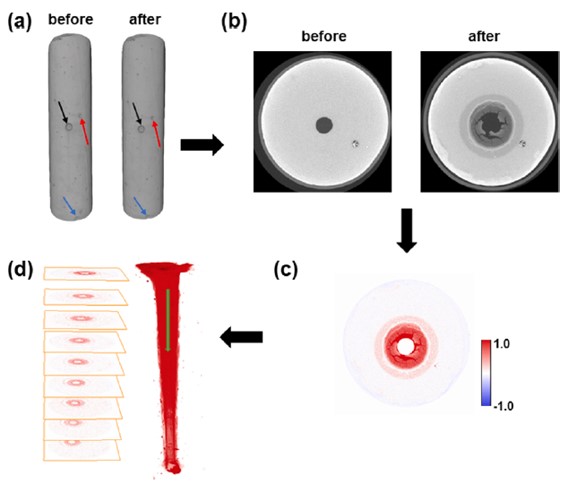3D micro-structural changes of an artificial flow channel in wellbore cement under geologic CO2 storage conditions: Combined effect of effective stress and flow
Comparative experimental observations of cement with a flow channel subject to CO2-saturated brine flow by micro-CT scanning and CT image post processing.

Understanding CO2-induced micro-structural changes at the imperfections in wellbore cement is vital for assessing the risk of CO2 leakage through wellbore cement under geologic CO2 storage (GCS) conditions. To investigate the evolution of a flow channel width in cement under GCS conditions and the influence of effective stress and flow on the micro-structural changes of the flow channel in cement, we carried out a set of experiments in which the flow condition (flow-through v.s. static) and the effective stress (3 MPa effective stress v.s. no effective stress) were varied. Micro-structural changes of an artificial flow channel were investigated by X-ray micro-computed tomography (CT). CT images revealed a clear micro-structural change of the flow channel and distributions of Ca(OH)2/C-S-H dissolution and calcite precipitation zones near the channel after reacting with CO2-saturated brine. CT results showed that a flow rate of 0.01 mL/min through the channel turned channel self sealing (as observed in the static scenario) into channel opening. Effective stress accelerated the dominant chemical reaction, i.e., enhancement of Ca(OH)2/C-S-H dissolution around the channel in a flow-through scenario and enhancement of calcite precipitation around the channel in a static scenario. It seems that effective stress and flow have a combined contribution to micro-structural change of the flow channel in hydrated Portland cement, which may increase the risk of CO2 leakage through wellbore cement when exposed to high concentration CO2.